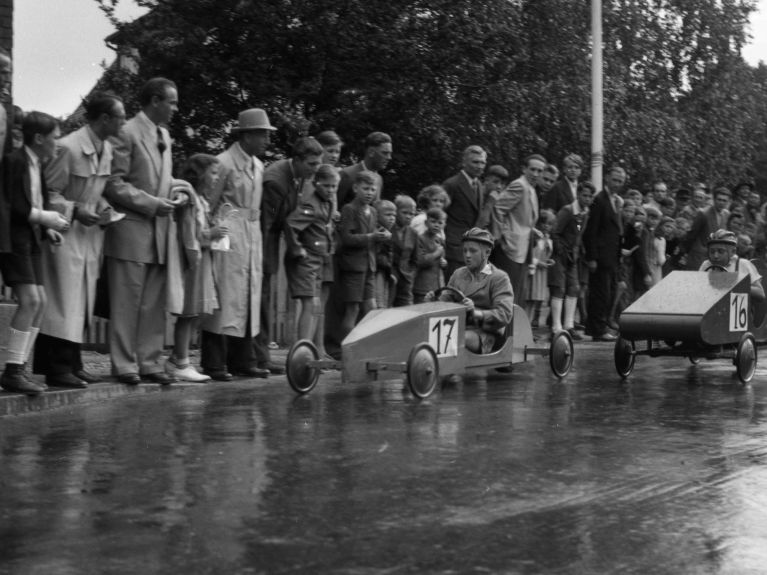Clooney, Eisenhower and even more history
The German-American historian John Provan keeps a private archive full of unique historical mementos. We paid him a visit.

When John Provan opens the door on the dot of 10 o’clock in the morning, the sound of a blackbird can be heard from inside the flat. It’s not a real bird - it’s the clock in the hall, which chimes every hour with a birdcall. The living room of the spacious flat in the small Hessian town of Kelkheim near Frankfurt am Main looks more like an antique shop. Busts of John F. Kennedy and Elvis Presley, alongside a porcelain Micky Mouse figure, adorn the windowsills of the bright room, while a display case presents an extensive collection of rare Hummel figurines. The coffee table by the sofa on which Provan takes a seat sports four Mainzelmännchen, the little cartoon characters that are the mascot of Germany’s public service TV broadcasterZDF. The 67-year-old German-American is a historian and collector.
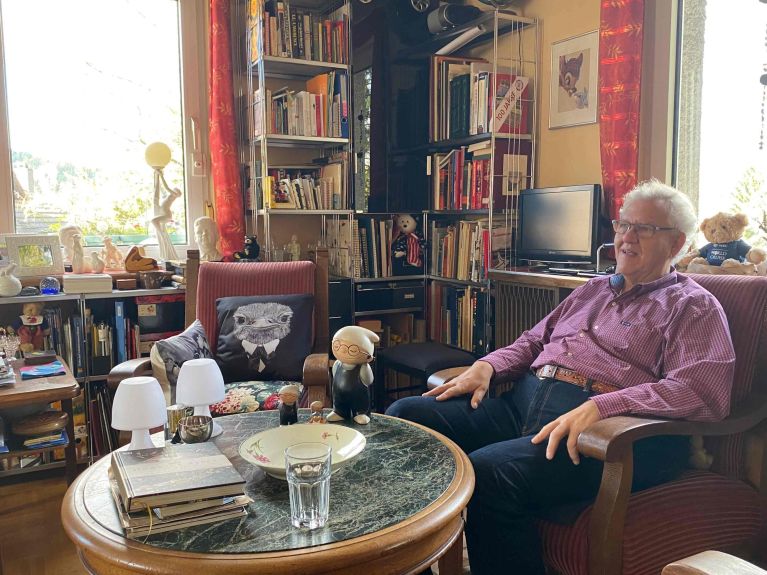
His father was a US soldier stationed with the Air Force in the Rhine-Main region, which is where he met Provan’s Hessian mother. Just like many other German-American families that formed during and after the Allied occupation of Germany following the Second World War, the Provans moved around a lot. John Provan was born in Ohio and spent much of his childhood at the US barracks in Sembach in Rhineland-Palatinate. He studied in Maryland and acquired his PhD in Darmstadt. In his work as a historian, he also explores the many ties between the USA and Germany and has written books about the Berlin Airlift and Kennedy’s visit to Germany. Around 25 years ago, something happened that he now describes as his “call of destiny”.
On a mission to salvage treasures
When the Cold War ended, more and more US facilities were shut down. “When the Yanks move away and leave the barracks, the premises have to be left broom clean! Everything has to be cleared out,” explains Provan. That’s easier said than done. A barracks is a complex of buildings that can often be the size of a small town. Residential buildings, schools, libraries, huts and offices are abandoned in a hurry - with quite a lot getting left behind in the process. The mountains of documents, photographs and other items could not be sent back to the USA, nor were the commanding officers allowed to give them away. Provan realised that lots of valuable material risked being lost forever. “Much of what we Americans did here left its mark. As a historian, I felt it was important for somebody to collect this evidence and preserve it for the next generation.”
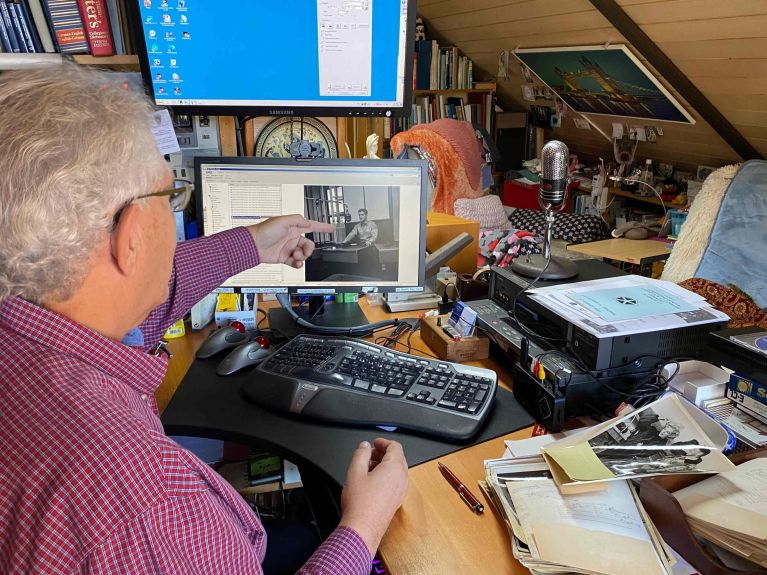
So Provan wandered around old barracks hunting for remnants of historical significance. He admits that this wasn’t really allowed. “It was all a bit like stealing of course, but there was no other way to do it,” he said. Equipped with a torch, screwdriver, hammer and camera, he looked through the offices and basements that were to be cleared out. He even rummaged through the bins. “We call this dipsy dumpster diving. That’s not allowed either, but so long as you do it at the weekend and the military police don’t catch you... Nobody complained, explains Provan. On the contrary, museums and newspapers get in touch with him to find out what he has salvaged.
Eisenhower and Clooney
The clock in the hall chimes - this time it’s a cuckoo to let us know it is 11 o’clock. John Provan is 1.90 metres tall, has thick grey hair and is wearing jeans and a checked shirt. He climbs up a spiral staircase. Here, in a small room with a huge TV, is where he works. A precious memento stands in front of his desk: It’s a wooden desk nameplate that reads “GEN. Dwight D. Eisenhower”. The later US president had been the military governor of the US occupied zone with an office in the I.G.-Farben-Haus in Frankfurt am Main, which today is one of Goethe University Frankfurt’s buildings. The desk on which the nameplate stood is where Eisenhower signed Proclamation No. 1 of the Allied Control Council in 1945. Provan discovered it on the basement floor of an old military hospital.
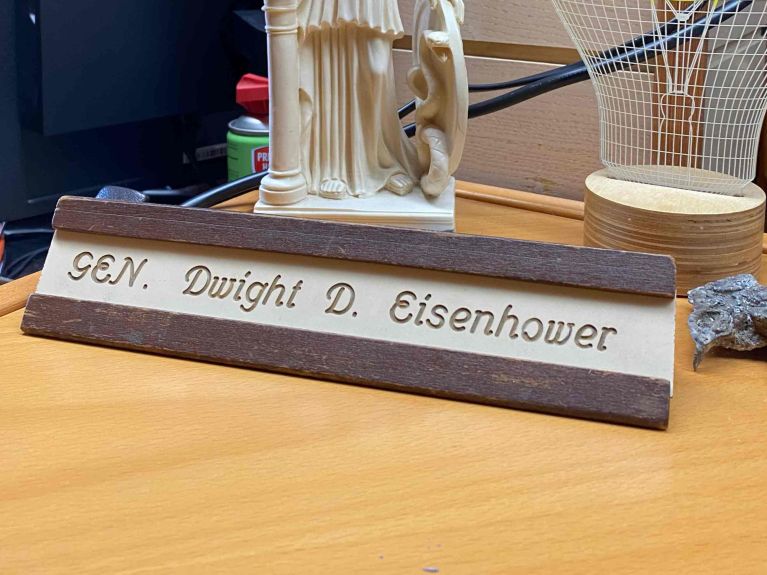
Professional photographers also worked in the US barracks. Rescued photographs therefore account for a large part of Provan’s archive. He has already scanned 400,000 negatives - and has around 30,000 still to go. The photographs show what life was like in the barracks and document America’s influence on the still young Federal Republic of Germany. One example: The American Forces Network (AFN) radio broadcasting service that was founded in 1943 played a key role in bringing US pop culture to Germany and Europe. Provan’s photographs reveal who the radio show hosts and DJs were. Peter Lustig can be seen on one - he later become a legendary presenter of German children’s TV programmes. Another shows Bill Ramsey, a popular jazz musician and singer. And then there is a man who is the spitting image of Hollywood star George Clooney. Which is no coincidence, as Nick Clooney is George’s father.
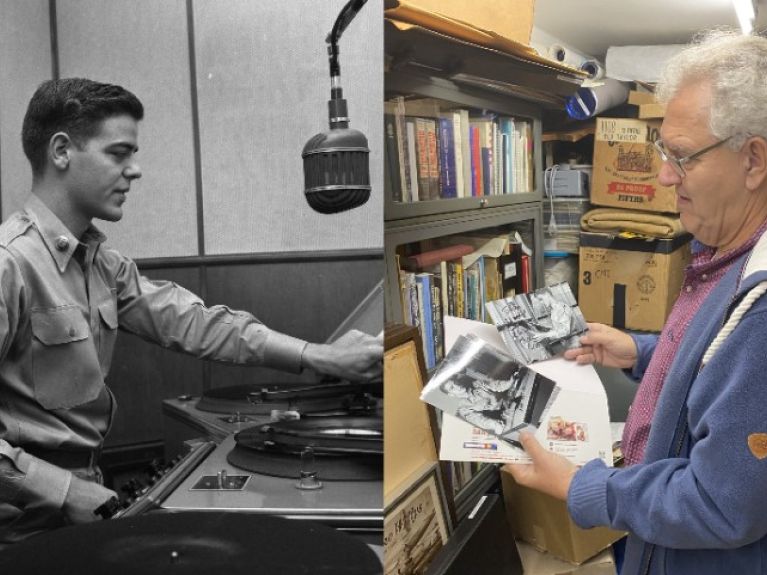
Nick Clooney was a soldier who was stationed in the German state of Hesse in 1954 and 1955 and also worked as an AFN presenter and DJ. 60 years later, on his way to attend his son George’s wedding in Venice in 2014, he visited Frankfurt once again. At the time, he also met John Provan. Together, they listened to recordings of Clooney’s old radio shows. Nick Clooney was delighted, as can be seen from the thank-you card he wrote.
John Provan’s huge private archive relates to all aspects of the wide-ranging ties between the USA and Germany. It helps us better understand Germany’s multicultural post-war history. Pictures can also be seen of the “German Youth Activities Program”, a kind of precursor to today’s youth centres: US soldiers who played baseball or built soapboxes with German children. As John Provan comments, US soldiers also took German customs back home with them - everything from kindergartens to the Oktoberfest in Pennsylvania. But that’s another story.
